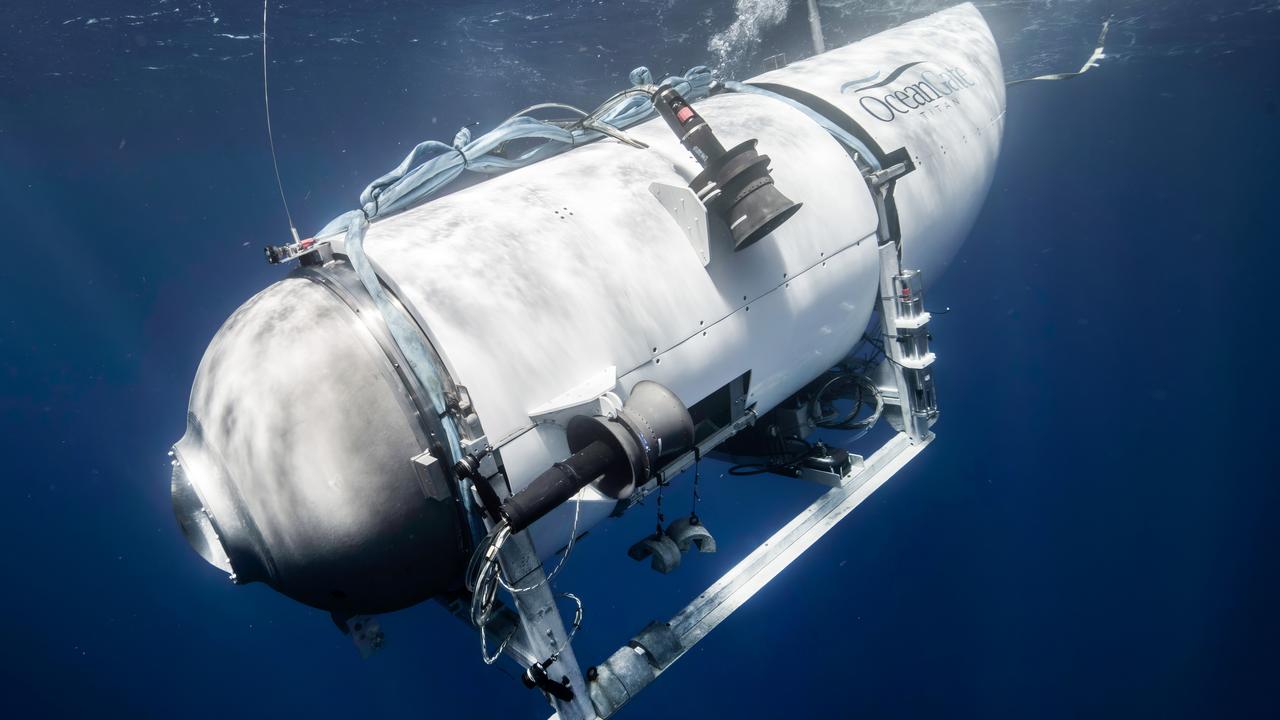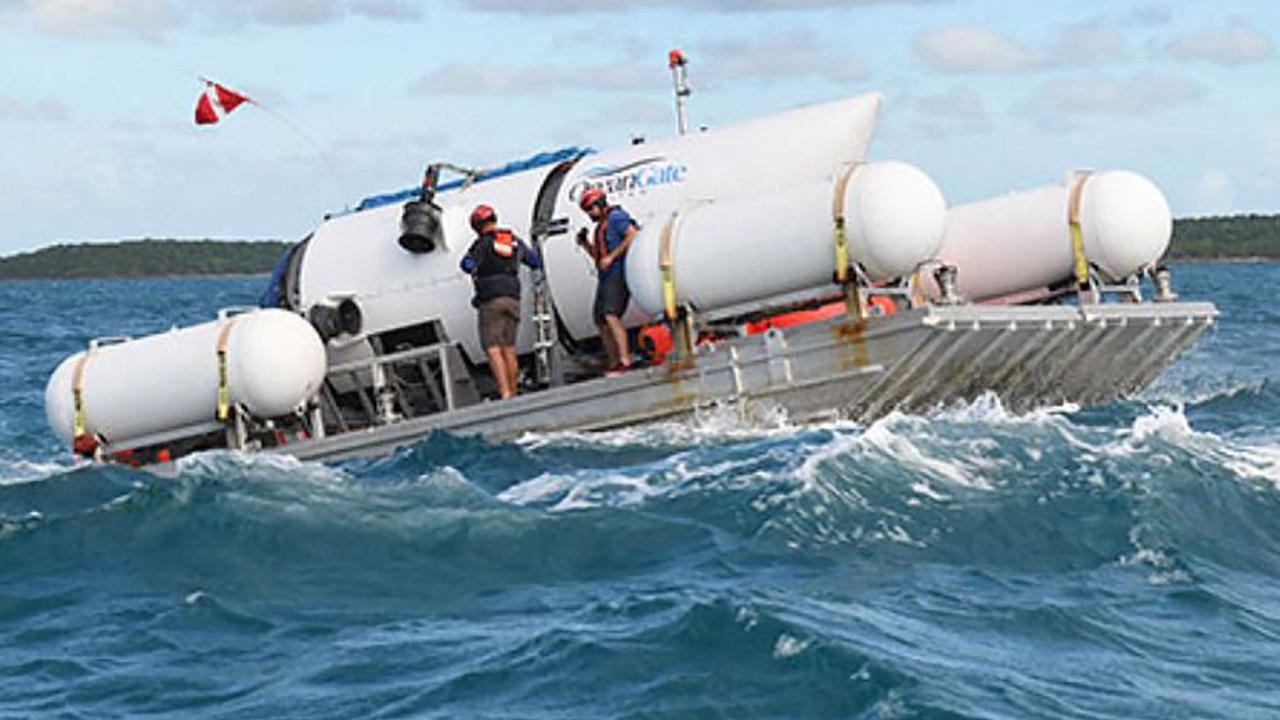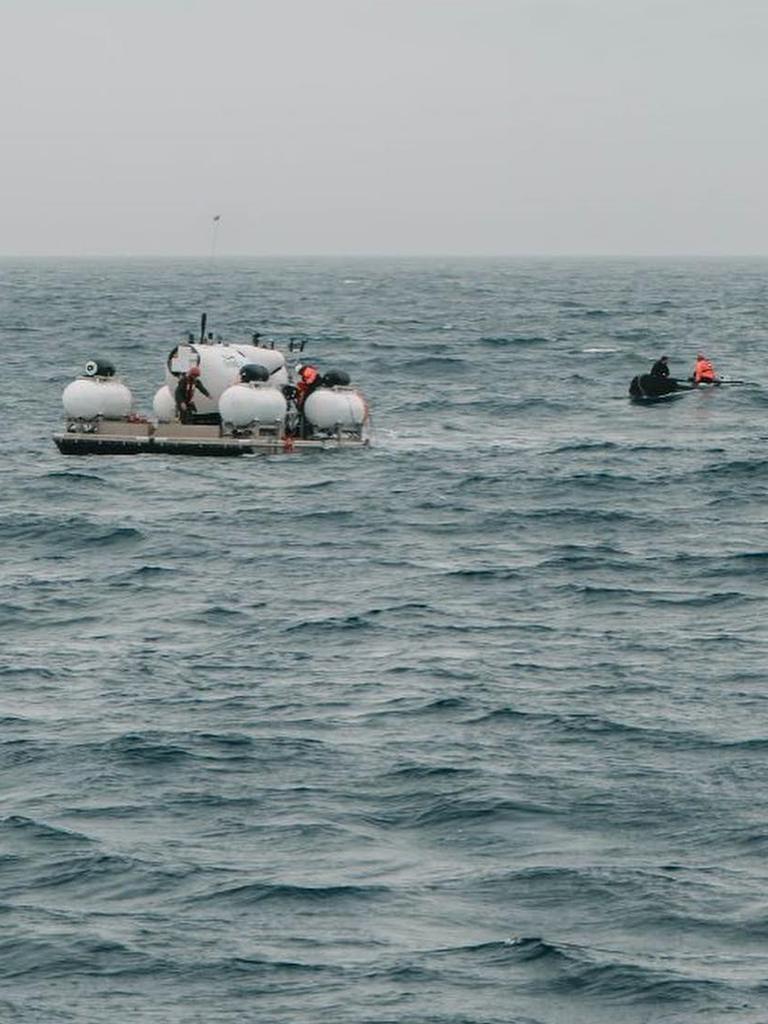No survivors as search for Titanic tourist sub finds wreckage on the ocean floor
UPDATE: Five lives have been lost on the Titan sub touring the Titanic shipwreck after it suffered a ‘catastrophic implosion’

READING LEVEL: RED
Search crews hunting for the Titan submersible* carrying five passengers have found “debris*” on the ocean floor close to the Titanic shipwreck.
The US Coast Guard said all lives had been lost after the submersible suffered a “catastrophic* implosion*”, bringing a tragic end to an urgent around-the-clock search.
“The debris is consistent with the catastrophic loss of the pressure chamber (where the crew were sitting),” said Rear Admiral John Mauger of the First Coast Guard District.

OceanGate Expeditions, the company that owned and operated the submersible, said those on board included its CEO Stockton Rush, two members of a well-known Pakistani family, Shahzada Dawood and his son Suleman Dawood; British adventurer Hamish Harding; and Titanic expert Paul-Henri Nargeolet.
“These men were true explorers who shared a distinct* spirit of adventure, and a deep passion for exploring and protecting the world’s oceans,” OceanGate said in a statement. “We grieve* the loss of life and joy they brought to everyone they knew.”

The Titan launched on Sunday and was reported overdue that afternoon around 600km off the coast of Newfoundland, Canada, where the wreckage of the Titanic is located 3800m below the surface after it sank more than a century ago.
Rescuers rushed ships, planes, underwater robots, and other equipment to the site of the disappearance. Some sounds were heard underwater every 30 minutes near the search zone, but the US Coast Guard now believes these were not from the submersible.

The submersible had seven backup systems to return to the surface, including sandbags and lead pipes that drop off and an inflatable* balloon.
But by Thursday, when the oxygen supply was expected to run out, there was little hope of finding the crew alive.
OceanGate has been documenting the Titanic’s decay and the underwater ecosystem* around it on yearly expeditions* since 2021. The three fee-paying passengers on this journey each paid $US250,000 ($AUD365,000) to take part.

Nicolai Roterman, a deep-sea ecologist* and teacher of marine biology* at the University of Portsmouth, England, said the disappearance of the Titan highlights the dangers and unknowns of deep-sea tourism.
“Even the most reliable technology can fail, and therefore accidents will happen. With the growth in deep-sea tourism, we must expect more incidents like this,” he said.
Associate Professor Eric Fusil, director of the Shipbuilding Hub at the University of Adelaide agreed, saying: “Going undersea is as, if not more, challenging than going into space”.
POLL
GLOSSARY
- submersible: a craft designed to travel underwater
- debris: wreckage
- catastrophic: a sudden disaster
- implosion: sudden explosive collapse
- distinct: different or unusual
- grieve: deep sadness or loss
- inflatable: able to be blown up with air
- eco-system: a geographic area where plants, animals, and other organisms, as well as weather and landscape, work together to form a bubble of life
- expeditions: organised journey for a particular purpose, including research
- ecologist: scientist who explores how living things depend on one another for survival
- marine biology: study of life in the ocean
EXTRA READING
Shipwreck discovery solves 50-year mystery
Titanic wreckage in ocean floor close-up
Bookings open for Titanic submarine tour
QUICK QUIZ
1. The Titanic wreck sits how many metres beneath the surface of the water?
2. How far off the coast of Newfoundland is the wreck?
3. What part of the submersible is believed to have imploded?
4. How many back-up systems did the vessel have? What were they?
5. What was the Titan documenting on its yearly expeditions?
LISTEN TO THIS STORY
CLASSROOM ACTIVITIES
1. For and against
Should tourists be allowed to go to sites like the wreck of the Titanic at the bottom of the ocean? Write a list of reasons for and against.
Time: allow 15 minutes to complete this activity
Curriculum Links: English; Science; History; Health and Physical Education; Personal and Social Capability
2. Extension
Why do you think that “ … going undersea is as, if not more, challenging than going into space…”? Brainstorm as many ideas as you can. Use information in the story and your research skills to help you.
Time: allow 60 minutes to complete this activity
Curriculum Links: English; Science; Design and Technologies; Health and Physical Education
VCOP
I spy nouns
Nouns are places, names (of people and objects), and time (months or days of the week).
How many nouns can you find in the article. Can you sort them into places, names and time?
Pick three nouns and add an adjective (describing word) to the nouns.

